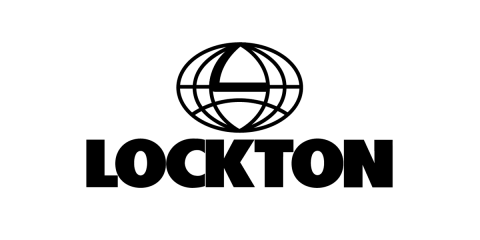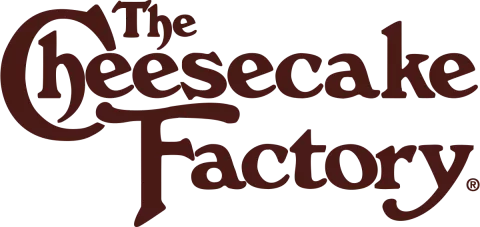About Marvin
The Marvin Companies, Inc. (Marvin) is a family-owned and operated enterprise headquartered in Warroad, Minnesota. Initially founded as a cedar and lumber business in 1912, the company first began manufacturing doors and windows in 1939.
Now under the leadership of the fourth generation of the Marvin family, the business currently employs approximately 7,000 people, operates plants in nine states, and has distribution, sales, service, and retail locations throughout the U.S. and Canada.
An Enhanced Approach to Risk Identification, Assessment and Mitigation
In recent years, a number of factors — rapid growth spurred by increased product demand, continual changes in governmental rules and regulations, and the potential for global supply chain disruption, among others — combined to present challenges to the well-established, comprehensive enterprise risk management (ERM) infrastructure in place at Marvin.
The organisation’s executive leadership understood the necessity to adapt and evolve existing processes for identifying, assessing and mitigating risk. Steve Tourek, Senior Vice President and General Counsel for Marvin, summarises the challenges this way:
“We needed to approach risk in ways that were more timely, more integrated with normal business processes, and more sophisticated in response to organisational changes as well as to ever-morphing business conditions.”
To accomplish this, Scott Weislow — Senior Director of Enterprise Risk Management — and his team designed plans for enhancing the comprehensiveness, responsiveness, and agility of Marvin’s ERM programme.
Central components of the changes included the following:
- More fully leveraging the expertise and experience of Marvin employees to identify interrelated and emerging risks
- Introducing new scoring models to better assess and rank the potential impact of risks on the organisation’s strategic, financial and operational objectives
- Incorporating risk surveys and rankings into the annual strategic planning activities of senior leaders at Marvin
- Using Key Performance Indicators (KPIs) to gauge the effectiveness of mitigation plans in real-time and quickly make adjustments based on the effectiveness of specific mitigation efforts or changing conditions
- Working with the Marvin Internal Audit team to monitor programme performance and ensure ongoing improvement
With the approval of Marvin’s executive leadership team, the board of directors, and a designated Enterprise Risk Management Committee, the next steps entailed implementing the changes and rolling them out to the organisation. According to Weislow, while there was enthusiastic support for these enhancements, there were also concerns that programme-related activities — the involvement of more employees in the identification of risk, the application of more detailed risk scoring and KPIs, and requirements for reporting on and communicating findings — might present resource-heavy challenges. “The commitment I made is that we will not make this a cumbersome and time-consuming effort,” he says.
The Right ERM Technology Solution is Close at Hand
Working closely with Walt Williams, a Senior Consultant at Shelter Island Risk Services, Weislow and the Marvin risk management team began the search for technology to help simplify and streamline ERM efforts. The system would need to be easy to use, allow for the automation of workflows, and provide multiple options for clearly communicating with various stakeholders throughout the organisation. It turned out that the right solution was very close at hand.
Since 2014, Marvin has used Origami’s Risk Management Information System (RMIS) solution suite to manage workers’ compensation, auto liability, and product liability incidents and claims; track vendor certificates of insurance (COIs); and collect values for the business’s annual insurance renewal process. High levels of satisfaction with the RMIS software and the client service they’ve received over the years piqued interest in learning more about Origami’s ERM solution suite. Among the ERM features and potential applications that became evident to the team as they received product demonstrations and discussed the solution’s capabilities were the following:
- Configurability: The flexible ERM solution could be adapted to Marvin’s unique framework and scoring models, without requiring changes to backend code. This would allow for a shorter implementation time and allow for future changes as Marvin’s programme evolves.
- Automated Workflows and Notifications: The Origami solution would provide options for automating ERM-related processes. For example, rather than issuing and following up on risk assessment surveys on a one-off basis, the Marvin team could configure rules for automatically generating assignments and notifications to risk owners.
- Ease of Use: In addition to administrative tools and settings with which members of the risk management department were already familiar, Origami’s intuitive interface and embedded instructions could help to simplify ERM-related activities. For example, risk owners could easily access and update KPIs on the actions assigned to their risk plans. Furthermore, ease of use might also reduce the need for lengthy, time-consuming training and help promote widespread adoption.
After deciding to move forward with the solution, the Marvin team and Walt Williams began working with Origami service team members to put the ERM technology in place.
Adding Internal Audit Functionality to a Comprehensive, Single-Platform Solution
As the implementation of programme enhancements and the new technology solution progressed, the Marvin team also decided to incorporate Origami’s Internal Audit functionality into their programme. In addition to using the tool to more efficiently create, perform, monitor, and report on audits, sharing a common platform helps to foster transparency and collaboration between the risk management and internal audit teams.
“One of the advantages of using Origami Risk for both is that the information we are pulling together will feed into the internal audit process,” says Weislow. “As the internal audit team works with our audit committee to determine their audit agenda for the coming year, they can easily access the risk register and risk mitigation plans. They can then use that information to help shape what they’ll be working on.”
In turn, Weislow and his team will also be able to leverage audit results to get a clearer picture of the progress and effectiveness of risk mitigation plans.
A Dynamic Approach to Enterprise Risk Management
Ultimately, the success of any enterprise risk management strategy is dependent on results. Rather than a series of check-box exercises, the various components of a successful ERM programme must truly inform, drive actions that might otherwise not have been taken, and measure effectiveness in relation to the strategic objectives of the organisation.
According to Walt Williams, what has made Marvin’s enterprise risk programme successful — both in the past and, now, with programme enhancements in place — is just that. “It’s not theoretical,” he says. IInstead, the implementation of programme changes and the application of technology that truly supports the efforts of the Marvin team have ensured that the organisation has in place a dynamic approach for taking actionable steps to identify, assess, and mitigate current and emerging risks. These include the following:
- More stakeholders engaged in risk surveys. Today, Marvin is using Origami to expand the identification of risks to the organisation’s strategic objectives. More than 100 employees are now tasked with completing formal risk surveys. By expanding the number of risk stakeholders engaged in the process of identifying risks, Marvin has a more holistic view of risk, greater visibility into the interconnectedness of risk across the enterprise, and is better able to identify and pull together multiple risk owners who can collaboratively design and execute risk mitigation strategies.
- An increased risk survey cadence. While conducting risk surveys was once an annual process, surveys will now be sent twice per year using Origami. By increasing the cadence of risk surveys, the likelihood that risks are missed is reduced. Furthermore, with the completion of more risk surveys, a stronger risk culture is fostered and there is an improved likelihood that emerging risks are identified.
- Risk scoring model changes. Risks identified through surveys and follow-up discussions are scored in Origami based on a reconfigured formula that takes into account likelihood and impact to the business. As part of the continuous programme improvements, velocity will also be added to the formula in the near future.
- Risk surveys and rankings incorporated into strategic planning. Enhancements to the programme include providing results from risk surveys to Marvin’s board of directors, senior leaders and risk committee. On an ongoing basis, this will provide leadership with visibility into up-to-date risks that can then be used in annual strategic planning sessions.
- Risk mitigation plans are linked with KPIs. Risk mitigation plans will be tracked, measured, and performance assessed using defined KPIs that are assigned to actions. Paired with dashboards and automated notifications in Origami, this will simplify the task of checking on mitigation plan status and following up with designated risk owners.
Weislow and the risk management team are also working closely with Marvin’s internal audit team to continuously improve the organisation’s enterprise risk management programme. With the recently completed rollout of internal audit tools from Origami, compiled risk surveys are available for use in determining annual audit agendas in the future. The risk management team will also be able to leverage the work of the internal audit team to assess progress against risk mitigation strategies and help the team to understand if KPIs and performance criteria are being met.
What’s Next for Marvin and Origami Risk
Using Origami’s RMIS, ERM, and Internal Audit functionality, the Marvin risk management team continues to refine processes that will build upon the success of its comprehensive and dynamic enterprise risk management programme. As they do so, they are also exploring new ways to leverage the flexibility of Origami’s single-platform solutions to improve existing processes and add new efficiencies. For example, Marvin will soon begin using Origami for managing litigation files and contracts with vendors and suppliers.



